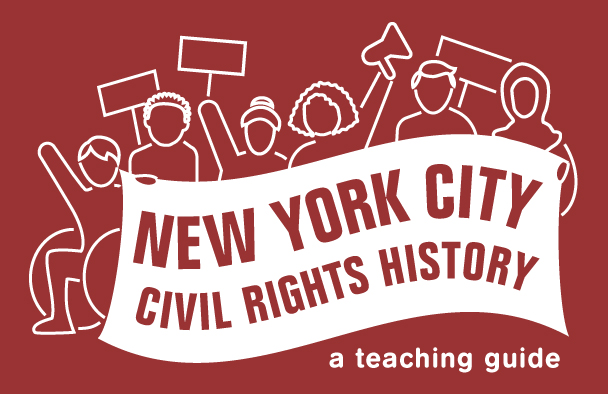- How New Yorkers talk about schools, especially white and liberal and non-disabled New Yorkers, has justified and obscured rather than challenged segregation.
Language can be a way of preserving segregation and resisting desegregation. Many policy choices have created segregation in housing and schooling in New York. But talk about what the “good” schools are, who the “good” kids are, or how families in “better” neighborhoods deserve “better” schools, are subtle ways to speak about racial segregation as if it just happens naturally, instead of looking at policy choices that support segregation. Many people who say they support desegregation or oppose racism still speak and think these ways.1
Some of New York’s most powerful white liberal organizations - like The New York Times, for example - used their voices against civil rights activism. They supported an unjust status quo and saved their criticism for those who sought to challenge it.2
Moreover, explicit racist and ableist ideas and terms blame individuals and their communities - rather than policies and people in power - for segregation and inequality. In the 1960s and afterwards, some educators and policymakers spoke of “cultural pathology” or “cultural deprivation” in Black and Latinx communities. They labeled Black and Latino boys as “socially maladjusted,” instead of noticing how schools were not serving these students well.3
Likewise, ableism can also seem to justify segregation. Some people, including some educators, claim that it is just common sense to separate students based on their disability status or special education label. Oftentimes advocates seeking supports for Disabled students in courts or in policy feel like they have to emphasize how Disabled students are different from their peers, rather than emphasizing what students have in common.4
NYC no longer officially segregates students by racial category, but it does still segregate many students by disability category, placing them in different classrooms in schools, different programs in school buildings, or even in the separate District 75 - which is a district for students with disabilities, and which has many more Black and Latino boys than their proportion in the city overall. Through segregation of various forms, students with disabilities are often excluded from important parts of schooling, like athletics, assemblies, and various events.5
Why is segregation by disability category seemingly acceptable policy in NYC today, when segregation by racial category is (at least as official policy) not acceptable?
-
Jeanne Theoharis. A More Beautiful and Terrible History: The Uses and Misuses of Civil Rights History (Boston: Beacon Press, 2018). ↩︎
-
Cheri Fancsali, “Special Education in New York City: Understanding the Landscape” (Research Alliance for NYC Schools at NYU Steinhardt, 2019), https://steinhardt.nyu.edu/research-alliance/research/publications/special-education-new-york-city. ↩︎
-
Francine Almash, “New York City ‘600’ Schools and the Legacy of Segregation in Special Education,” The Gotham Center for New York City History, June 21, 2022, .https://www.gothamcenter.org/blog/new-york-city-600-schools-and-the-legacy-of-segregation-in-special-education; Keith A. Mayes, The Unteachables: Disability Rights and the Invention of Black Special Education (Minneapolis: University of Minnesota Press, 2023). ↩︎
-
Alfredo J. Artiles, Sherman Dorn, and Aydin Bal, “Objects of Protection, Enduring Nodes of Difference: Disability Intersections With ‘Other’ Differences, 1916 to 2016,” Review of Research in Education 40, no. 1 (March 1, 2016): 777–820 ↩︎
-
Falancsali, “Special Education in New York City.” ↩︎
